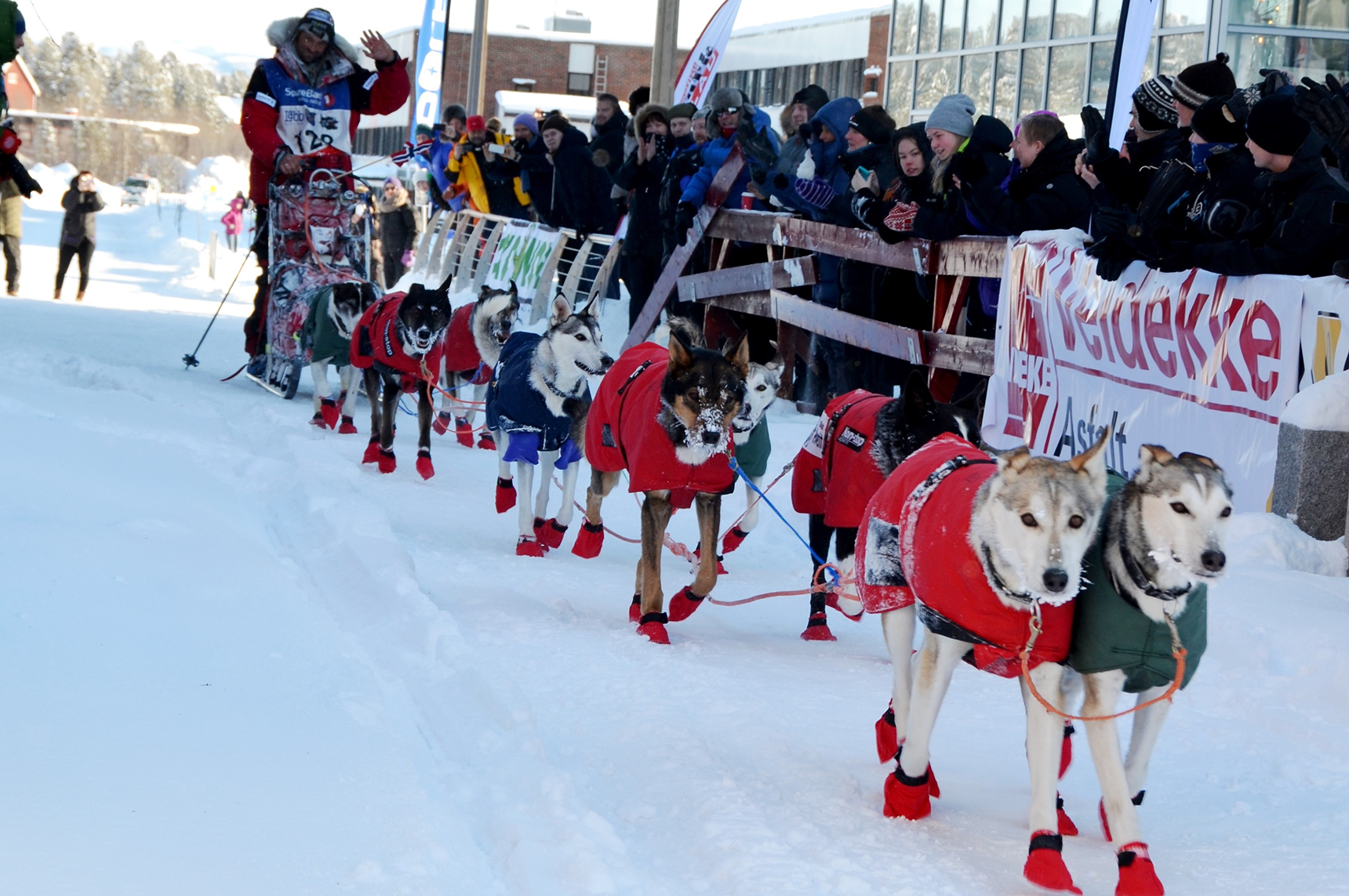Did you know that dogs have the biggest heart of all animals on the planet?
Most animals, including humans, have a ratio between heart weight and body weight of 0.6 percent. Dogs, however, have much larger hearts than all other animals.
If you compare the weight of a dog’s heart to its total body mass, you will get a ratio of 0.8 percent. And it can get even bigger. The heart of a sled dog will increase with exercise, from 0.8 to 1.0 percent.
So, what does this mean? Well, some might say that the unusually large heart of the dog is the reason for our four-legged friends' inexhaustible source of love and kindness. But the husky's heart contains more than a great deal of love. The big heart is also the secret behind the dogs' athletic abilities.
"But the husky's heart contains more than a great deal of love. The big heart is also the secret behind the dogs' athletic abilities".
The superpowers of the heart
Oskar Svendsen, an 18-year-old cyclist from Lillehammer, Norway, holds the highest VO₂ max scores ever recorded (97.5 ml/kg/min). That is more than twice as high a VO₂ -max as most of us have. (VO₂ max refers to how much oxygen your body can absorb and use during exercise).
Although this is a world record, it's not much to brag about when you compare it to the oxygen uptake of well-conditioned dogs. The aerobic capacity of a fully conditioned sled dog is estimated to be about three times higher (300 ml/kg/min).
No wonder dogs are the greatest ultra-marathoners on the planet. They can run five back-to-back marathons in a day, day after day, for more than a week.
The big heart and the high oxygen uptake are one of the secrets behind the dog's super athleticism. But dogs also have other unique biological characteristics that make them the best athletes on the planet.
.png?width=1720&height=1156&name=Husky%20(winner).png)
Two types of fuel
Like all mammals, dogs, and humans rely on two types of fuel. There is glycogen, which comes from carbs, sugar, fat, and protein. Glycogen is a fast-burning energy source, while fat and proteins burn up slower.
To turn fat and protein into energy, humans also need to keep burning a small but steady supply of glycogen. And that turns out to be a problem for many human athletes because the body's glycogen storage tanks are small.
Metabolic beast mode
So, runners burn glycogen faster than they can make it, and they will bunk.
Sled dogs never bunk. That’s because something noteworthy happens in the body in the first part of a training run or a race: The dog somehow shifts over to burning fat and protein without needing to use any glycogen. They get into metabolic beast mode!
Since fat and protein can be turned into energy immediately, the dogs can refuel throughout the run without worrying about running out of glycogen. Unlike human ultra-athletes, who often need weeks or months to recover from a hard run, the dog that does best in a race is often the one that has just recently returned from another one.

It's a matter of the heart
You may wonder how much these superathletes, who run three marathons a day, must eat.
Well, it is estimated that a sled dog competing in the Iditarod will burn about 9,000 calories each day; on a body-weight basis, this rate of caloric burn is 3.5 times that of a human Tour de France cyclist.
In other words, dogs have the perfect biological and genetic prerequisites to be the world's best athletes.
It's a matter of the heart.
There are still several other factors that determine whether our dogs will be able to live up to their physical potential.
An important factor is nutrition. You can read more about proper nutrition here.
How important is the right omega-3 delivery form

